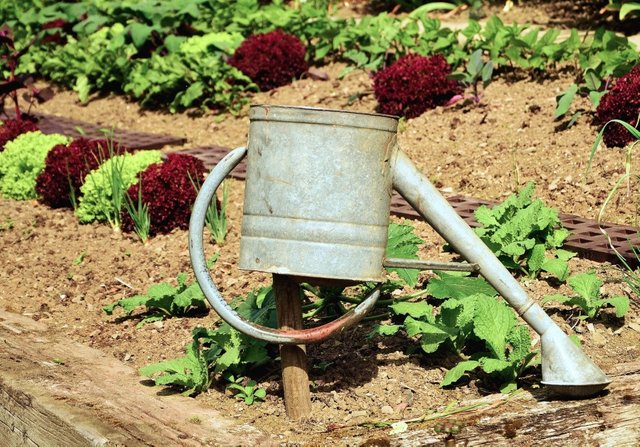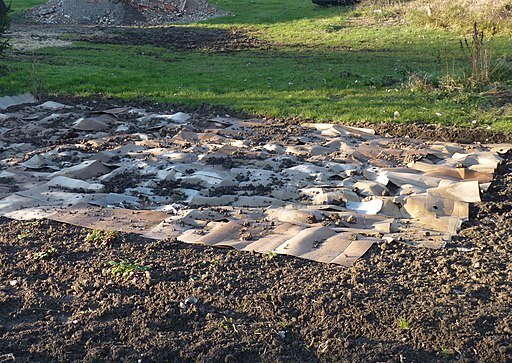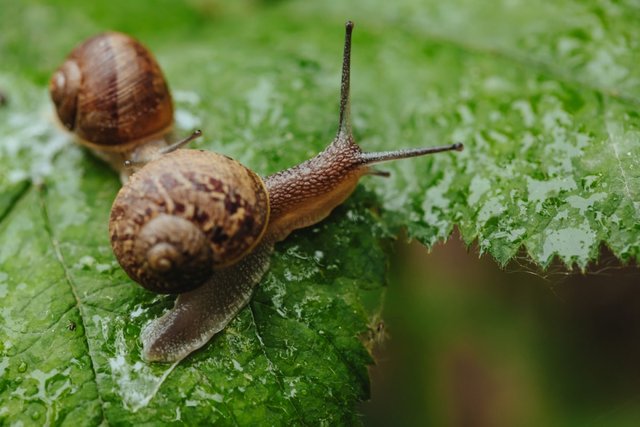Permaculture - Sheet mulching (lasagne gardening), Ruth's Stout's method (lesson 32)
SHEET MULCHING (LASAGNE GARDENING)
Sheet mulching is a form of bed preparation that involves composting on-site, underneath the plants. Thanks to this, we avoid additional work, such as preparing a special compost bin, regular fertilization of plants, etc. - they fertilize themselves for several years, thanks to a special substrate made of a few layers. This idea was described by Ruth Stout, a 19th-century American writer, and gardener, who included it in her "No-Work Garden Book".
Usually, the mulch size is much smaller, but Ruth recommends drastic mulching. Fears that the plants would suffocate and that the mulch would attract snails and fungal diseases turn out to be unfounded. The mulch produces a lot of beneficial worms, increasing the fertility of the soil. Birds eating worms add their droppings, enriching the soil with nitrates and phosphates.
This method not only helps to build soil by decomposing organic matter from top to bottom but also helps to control weeds, store water, cool the soil in summer and warm in winter, etc.
Perfect sheet-mulching, layers:
1)) original soil
2)) soil amendment (lime, rock dust, greensand, phosphate rock, bone meal, seaweed meal, blood meal)
3)) the thin layer of manure
4)) wet newspaper or cardboard (0.5 to 1.5 cm)
5)) the thin layer of manure or nitrogen-rich compost (0.5-3 cm)
6)) humid soil (5-10 cm)
7)) hay or other bulk organic matter (straw, yard waste, leaves, seaweed, finely ground bark, stables, wood scraps) - (25-35 cm) C: N ratio of this layer should be between 100:1 and 30: 1 (see: the previous lessons about compost)
8)) compost (3-6 cm)
9)) mulch, for example, straw, leaves, bark, sawdust, pine needles, cereal husks, nut husks, or seagrass (6 cm)

Basic sheet-mulching layers:
1)) original soil
2)) wet newspaper or cardboard (0.5-1.5 cm)
3)) humid soil (5-10 cm)
4)) 30 cm of organic mulch (bark, sawdust, seaweed, hay, straw, grain husks, leaves, etc.)
Tips:
- prepare sheet mulching in the fall. Cardboard that protects against weeds will have time to unfold by spring enough not to disturb the roots of our plants reaching into the deeper layers of the soil
- never use newspapers made of toxic paper or ink. As a rule, colored ink is more toxic than black ink, and gray, large format paper used for the newspaper is much safer than white, artificially colored paper. Glossy paper is not allowed.
- if you use cardboard, get rid of staples, tape, or pieces with glue in advance. Alternatively, you can use wet old rags and clothes made of linen, wool, or cotton.
- do not use fresh hay as mulch (it has many weed seeds)
- try to arrange the layers in such a way as to maintain the optimal C: N ratio in the mulch
- It is much better to cover a small area thoroughly than to spread the mulch over it. Make sure the mulch is compact, with no air pockets
- Water the area well the day before mulching, unless the soil is already damp from the rain
- mow all the plants on the day of mulching. You don't have to pull the roots out - trim the plants and leave them in place to serve as another layer of compost.
- if your soil is clayey or strongly compacted, before starting to lay the layers, it is worth sticking the tiller into it in several places and slightly "opening" it (do not dig it)
- If you are using high-carbon materials such as straw or wood scraps, sprinkle nitrogen over them in the form of blood meal or other nitrogen-rich sources, or 'dilute' the mulch with another high nitrogen component
Disadvantages and difficulties
Some of you may be wondering how are weed seeds sterilized in this method when the mulch does not produce as much heat as the composter? The answer is: they are not. However, most weed seeds require light to germinate. Therefore, it is best to cover the litter containing the seeds with a few centimeters of straw, soil, bark, or other weed-free material. The few weeds that appear can be easily pulled out of the loose soil. To keep future weeds out, just make more mulch.
Snails are a disadvantage of sheet mulching. In the early stages of decay, slug populations may explode. You can get rid of them by cutting special rings from steel cans (not aluminum ones) and surrounding the plant stems with them. Steel irritates the body of snails, so it is an insurmountable barrier for these animals.
Plant the plants in new sheet mulch carefully. You can't just sprinkle fine seeds on coarse, undigested mulch because they'll get lost. If your sheet mulch does not break down to the soil before planting, plant the seeds in small pockets or ditches, filling them with earth or compost. The seedlings and vegetable starters should also go into small soil pockets about three times the size of the root mass of the plant.
All my lessons are shared totally for free with a CC-0 license (which means you can copy my text and share it wherever you want to, without the need to mark me as an author). I hope it will bring you joy.
Previous lessons can be read here:
Fertilizers
2 - types of manure and when to use it
3 - Compost. Basics
4 - advanced composting
6 - Green manure
7 - Phytosanitary plants
8 - Mineral fertilizers
--------------------------------------------------
Soil and minerals
10 - Boron, Molybdenum, Copper, Magnesium
11 - Zinc, Calcium, Iron and other elements
12 -soil components: sand and clay
14 -soil components: calcium, microorganisms, minerals
15 -soil components: water and air
--------------------------------------------------
Space
17 - Sectors in Permaculture
18 - Zones & sectors, practical use
19 - Perfect size of your garden
20 - What to choose lawn or meadow?
22 - Water reservoirs in the garden
23 - Rock Garden
24 - Patchwalks
--------------------------------------------------
Basics of traditional permaculture
26 - Basic tips for permaculture gardeners
--------------------------------------------------
Different types of beds
27 - The Keyhole bed 29 - homemade sugar in non-tropical climate Thank you for reading,
28 - Raised beds/Lazy beds
31 - Hugelkultur
Food production
@papi.mati



It is quite an interesting tutorial. There was a time at my grandmother's house, when African snails roamed the patios I don't know why, it would have been great to have known about the cans at that time to scare them away, but there was no papi.mati on Steemit: D
hahah :D here I am to save all the grandmas from the future and get rid of every snail from our gardens :)
Thank you very much for your comment :)
Congratulations, your nice post has been upvoted by the steem.skillshare curation trail!
If you wish to join as well our trail and support our community, other users, and earn the curation reward, please check out this post:
steem.skillshare curation trail post